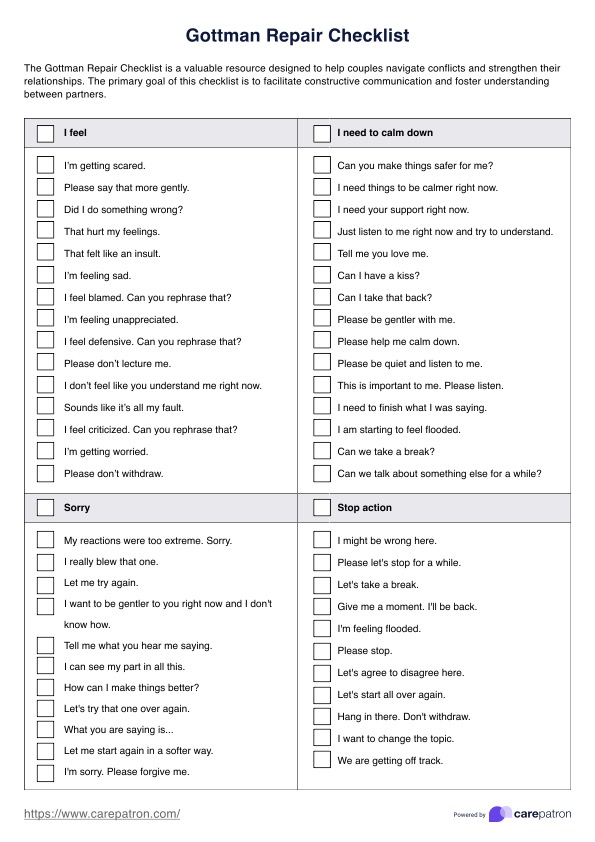The Gottman repair phrases are specific statements designed to de-escalate conflicts and foster reconciliation between partners. These phrases can include: expressing feelings (e.g., "I feel overwhelmed right now"), apologizing (e.g., "I’m sorry for my reaction"), finding common ground (e.g., "I see your point"), and requesting a pause (e.g., "Can we take a break").

Gottman Repair Checklist
Download the Gottman Repair Checklist Template to help clients enhance communication and make effective repair attempts.
Gottman Repair Checklist Template
Commonly asked questions
A repair attempt is defined as "any statement or action—silly or otherwise—that prevents negativity from escalating out of control." This concept emphasizes the importance of addressing conflicts early and creatively, allowing couples to maintain a constructive dialogue rather than letting arguments spiral into destructive patterns. Successful repair attempts can significantly enhance communication and emotional connection in relationships.
To repair after a conflict with a spouse, it is crucial to engage in open and honest communication while utilizing Gottman's repair phrases. Start by acknowledging the issue and expressing your feelings without placing blame, then offer a sincere apology if necessary. It’s also helpful to suggest taking a break if emotions are running high, allowing both partners time to cool down. Finally, reaffirm your commitment to the relationship by expressing appreciation or love, which can help restore emotional intimacy and move the conversation toward resolution.
EHR and practice management software
Get started for free
*No credit card required
Free
$0/usd
Unlimited clients
Telehealth
1GB of storage
Client portal text
Automated billing and online payments











